Topics
The Rise of Nationalism in Europe
- Introduction to the Rise of Nationalism in Europe
- The French Revolution and the Idea of the Nation
- The Making of Nationalism in Europe
- Introduction to the Making of Nationalism in Europe
- The Aristocracy and the New Middle Class
- What Did Liberal Nationalism Stand For?
- A New Conservatism After 1815
- The Revolutionaries
- The Age of Revolutions: 1830 - 1848
- Introduction to the Age of Revolutions: 1830 - 1848
- The Romantic Imagination and National Feeling
- Hunger, Hardship and Popular Revolt
- 1848: The Revolution of the Liberals
- The Making of Germany and Italy
- Germany - Can the Army Be the Architect of a Nation?
- Italy Unified
- The Strange Case of Britain
- Visualising the Nation
- Nationalism and Imperialism
Power-sharing
- Belgium and Sri Lanka
- Majoritarianism in Sri Lanka
- Accommodation in Belgium
- Forms of Power-sharing
India and the Contemporary World 2
Resources and Development
- Types - Natural and Human
- Need for Resource Planning
- Natural Resources
- Concept of Land as a Resource
- Types of Soil
- Changing Land-use Pattern
- Land Degradation and Conservation Measures
- Soil Erosion
- Soil Conservation
Resources and Development
- Introduction to Resources and Development
- Types of Resources
- Development of Resources
- Resource Planning
- Land Resources
- Land Utilisation
- Land Use Pattern in India
- Land Degradation and Conservation Measures
- Soil as a Resource
Development
- Concept for Traditional Notion of Development
- Concept for National Income and Percapita Income
- Concept of Growth of National Income
- Critical Appraisal of Existing Development Indicators (PCI, IMR, SR and Other Income and Health Indicators)
- Need for Health and Educational Development
- Human Development Indicators (Holistic Measure of Development)
India and the Contemporary World 2
Power Sharing
- Concept for Power Shared in Democracies
- Concept for Federal Division of Power in India Helped National Unity
- Concept for Decentralisation - to What Extent Has Decentralisation Achieved this Objective
- Democracy Accommodate Different Social Groups
Development
- What Development Promises - Different People, Different Goals
- Income and Other Goals
- National Development
- Comparison Between Different Countries Or States
- Income and Other Criteria
- Public Facilities
- Sustainability of Development
Federalism
- Concept of Federalism
- India a Federal Country
- How is Federalism Practised?
- Decentralisation in India
Nationalism in India
- Introduction to Nationalism in India
- The First World War, Khilafat and Non-cooperation
- The Idea of Satyagraha
- The Rowlatt Act
- Why Non-cooperation?
- Differing Strands Within the Movement
- The Movement in the Towns
- Rebellion in the Countryside
- Swaraj in the Plantations
- Towards Civil Disobedience
- The Salt March and the Civil Disobedience Movement
- How Participants Saw the Civil Disobedience Movement
- The Limits of Civil Disobedience
- The Sense of Collective Belonging
Sectors of the Indian Economy
- Sectors of Economic Activities
- Comparing the Three Sectors
- Primary, Secondary and Tertiary Sectors in India
- Division of Sectors as Organised and Unorganised
- Sectors in Terms of Ownership - Public and Private Sectors
Forest and Wildlife Resources
- Concept of Forest and Wildlife Resources
- Flora and Fauna in India
- Conservation of Forest and Wildlife in India
Forest and Wildlife Resources
- Flora and Fauna in India
- Conservation of Forest and Wildlife in India
- Types and Distribution of Forest and Wildlife Resources
- Community and Conservation
Federalism
- Concept of Federalism
- What Makes India a Federal Country?
- How is Federalism Practised?
- Decentralisation in India
Contemporary India 2
Sectors of the Indian Economy
- Sectors of Economic Activities
- Historical Change in Economic Sectors
- Primary, Secondary and Tertiary Sectors in India
- Concept for Employment Generation
- Division of Sectors as Organised and Unorganised
- Protective Measures for Unorganised Sector Workers
Contemporary India 2
The Making of a Global World
- Concept of the Pre-modern World
- The Nineteenth Century (1815 - 1914)
- A World Economy Takes Shape
- Role of Technology
- Late Nineteenth-century Colonialism
- Rinderpest, Or the Cattle Plague
- Indentured Labour Migration from India
- Indian Entrepreneurs Abroad
- Indian Trade, Colonialism and the Global System
- The Inter-war Economy
- Wartime Transformations
- Post-war Recovery
- Rise of Mass Production and Consumption
- The Great Depression
- India and the Great Depression
- Rebuilding a World Economy: The Post-war Era
- Post-war Settlement and the Bretton Woods Institutions
- The Early Post-war Years
- Decolonisation and Independence
- End of Bretton Woods and the Beginning of ‘Globalisation’
Water Resources
- Water Scarcity and the Need for Water Conservation and Management
- Multi-purpose River Projects and Integrated Water Resources Management
- Rainwater Harvesting
Democratic Politics 2
Democratic Politics 2
Water Resources
- Sources of Water Resources
- Distribution of Water Resources
- Utilisation of Water Resources
- Multi-purpose Projects of Water
- Scarcity of Water
- Need for Conservation and Management of Water
- Fresh Water Management
Democracy and Diversity
- A Story from Mexico Olympics
- Differences, Similarities, Divisions
- Politics of Social Divisions
Money and Credit
- Role of Money in an Economy
- Formal and Informal Financial Institutions for Savings and Credit
- Formal Institution - Nationalized Commercial Bank
- Informal Institutions - Local Money Lenders, Landlords, Self Help Groups, Chit Funds and Private Finance Companies
Democracy and Diversity
- Divisions Inherent to the Working of Democracy
- Effect of Caste on Politics and of Politics on Caste
- Gender Division Shaped Politics
- Communal Divisions Affect Democracy
Money and Credit
- Money as a Medium of Exchange
- Modern Forms of Money
- Loan Activities of Banks
- Two Different Credit Situations
- Terms of Credit
- Formal Sector Credit in India
- Self-help Groups for the Poor
Agriculture
- Types of Farming
- Concept for Major Crops
- Concept for Crop Pattern
- Technological and Institutional Reforms for Agriculture
- Contribution of Agriculture to National Economy-employment and Output
Globalisation and the Indian Economy
- Introduction to Globalisation and the Indian Economy
- Production Across Countries
- Interlinking Production Across Countries
- Foreign Trade and Integration of Markets
- Globalisation
- Factors that Have Enabled Globalisation
- World Trade Organisation (WTO)
- Impact of Globalisation in India
- The Struggle for a Fair Globalisation
The Age of Industrialisation
- Introduction to the Age of Industrialisation
- Before the Industrial Revolution
- Hand Labour and Steam Power
- Concept of Hand Labour and Steam Power
- Life of the Workers
- Industrialisation in the Colonies
- The Age of Indian Textiles
- What Happened to Weavers?
- Manchester Comes to India
- Factories Come up
- The Peculiarities of Industrial Growth
- Market for Goods
Gender, Religion and Caste
- Gender and Politics
- Religion, Communalism and Politics
- Caste and Politics
- Religious Diversity
- Inequalities in a Triangle
Gender, Religion and Caste
- Gender and Politics
- Women’s Political Representation
- Religion, Communalism and Politics
- Caste and Politics
Understanding Economic Development
Agriculture
- Types of Farming
- Cropping Pattern
- Technological and Institutional Reforms for Agriculture
- Contribution of Agriculture to National Economy-employment and Output
- Impact of Globalisation on Agriculture
Globalisation and the Indian Economy
- Production Across Countries
- Foreign Trade and Integration of Markets
- Concept of Globalization and Factors
- World Trade Organisation (WTO)
- Impact and Fair Globalization
Understanding Economic Development
Popular Struggles and Movements
- Concept of Popular Struggles and Movements
- Mobilisation and Organisations
- Pressure Groups and Movements
Consumer Rights
- Consumer is Exploitation
- Factors Causing Exploitation of Consumers
- Rise of Consumer Awareness
- How a Consumer Should Be in a Market
- Role of Government in Consumer Protection
Minerals and Energy Resources
- What is a Mineral?
- Mode of Occurrence of Minerals
- Conservation of Minerals
- Hazards of Mining
- Energy Resources
- Conservation of Energy Resources
Print Culture and the Modern World
- Introduction to Print Culture and the Modern World
- The First Printed Books
- Print Comes to Europe
- Print Comes to Europe - Introduction
- Gutenberg and the Printing Press
- The Print Revolution and Its Impact
- A New Reading Public
- Religious Debates and the Fear of Print
- Print and Dissent
- The Reading Mania
- The Nineteenth Century
- India and the World of Print
- Religious Reform and Public Debates
- New Forms of Publication
- Introduction to New Forms of Publication
- Women and Print
- Print and the Poor People
- Print and Censorship
Data Filling
- Data Filling
Popular Struggles and Movements
- Popular Struggles in Nepal and Bolivia
- Movement for Democracy in Nepal
- Bolivia’s Water War
- Democracy and Popular Struggles
- Mobilisation and Organisations
- Pressure Groups and Movements
Consumer Rights
- Concept of Consumer Rights
- The Consumer in the Marketplace
- Consumer Movement
- Consumer Rights - Safety is Everyone’s Right
- Taking the Consumer Movement Forward
Minerals and Energy Resources
- Classification of Minerals
- Distribution of Minerals and Energy Resources
- Use and Economic Importance of Minerals
- Conservation of Minerals
- Types of Power Resources - Conventional Sources
- Types of Power Resources - Non-conventional Sources
- Distribution and Utilization and Conservation of Power Resources
- Conservation of Energy Resources
Political Parties
- Role Do Political Parties Play in Competition and Contestation
- Major National and Regional Parties in India/ Types of Political Parties
Manufacturing Industries
- Types of Manufacturing Industries
- Concept of Spatial Distribution
- Contribution of Industry to National Economy
- Industrial Pollution and Environmental Degradation
- Measures to Control Degradation
Political Parties
- Why Do We Need Political Parties?
- How Many Parties Should We Have?
- National Parties
- State Parties
- Challenges to Political Parties
- How Can Parties Be Reformed?
Manufacturing Industries
- Importance of Manufacturing
- Contribution of Industry to National Economy
- Industrial Pollution and Environmental Degradation
- Control of Environmental Degradation
Life Lines of National Economy
- Importance of Means of Communication and Transportation
- Concept for Trade and Tourism
Outcomes of Democracy
- How Do We Assess Democracy’S Outcomes?
- Accountable, Responsive and Legitimate Government
- Economic Growth and Development
- Reduction of Inequality and Poverty
- Accommodation of Social Diversity
- Dignity and Freedom of the Citizens
Outcomes of Democracy
- Democracy Be Judged and Outcomes
- Concept for Outcomes Reasonably Expect of Democracies
- Democracy in India and Expectations
- Concep for Democracy Led to Development, Security and Dignity for the People
- Sustains Democracy in India
Lifelines of National Economy
- Introduction to Lifelines of National Economy
- Roadways Transport
- Railways Transport
- Pipelines
- Waterways Transport
- Airways Transport
- Communication and Mass Media
- International Trade
Challenges to Democracy
- Thinking About Challenges
- Different Contexts, Different Challenges
- Different Types of Challenges
- Political Reforms
- Redefining Democracy
Challenges to Democracy
- Idea of Democracy Shrinking
- Major Challenges to Democracy in India
- Concept for Democracy Be Reformed and Deepened
- Concept for Role Ordinary Citizen Play in Deepening Democracy
Livelihoods, Economies and Societies
- Concept of the Pre-modern World
- Nineteenth Century Global Economy, Colonialism
- The Inter-war Economy
- A World Economy Takes Shape
- Proto-industrialization and Pace of Industrial Change
- Life of Workers
- Industrialization in the Colonies
- Early Entrepreneurs and Workers
- The Peculiarities of Industrial Growth
- Market for Goods
- Development of Modern Cities Due to Industrialization in London and Bombay
- Housing and Land Reclamation
- Social Changes in the Cities
- Cities and the Challenge of the Environment
Events and Processes
- Growth of Nationalism in Europe After the 1830s.
- Ideas of Giuseppe Mazzini
- Characteristics of the Movements in Poland, Hungary,Italy, Germany and Greece
- Factors Leading to Growth of Nationalism in Indo-china
- French Colonialism in Indo-china
- Phases of Struggle Against the French
- The Ideas of Phan Chu Trinh
- The Ideas Phan Boi Chau, Ho Chi Minh
- Second World War and the Liberation Struggle.
- America and the Vietnam War
- Impact of First World War, Khilafat, Non- Cooperation
- Differing Strands Within the Movement
- The Limits of Civil Disobedience
- The Sense of Collective Belonging
- Salt Satyagraha
- Movements of Peasants, Workers, Tribals.
Everyday Life, Culture and Politics
- History of Print in Europe.
- The Nineteenth Century
- Relationship Between Print Culture, Public Debate and Politics
- Emergence of the Novel as a Genre in the West
- Relationship Between the Novel and Changes in Modern Society
- Early Novels in Nineteenth Century India
- Study of Two Or Three Major Writers
- Indian National Congress
- Communist Party of India
- Bharatiya Janata Party
- Communist Party of India (Marxist)
- Bahujan Samaj Party
- Nationalist Congress Party
- Trinamool Congress
Notes
National Parties
- All over the world, democracies that follow a federal system tend to have two types of political parties: parties that are present in only one of the federal units and parties that are present in several or all of the federal units. This is also the case in India.
- There are some country-wide parties, which are called 'national parties'. These parties have branches in several states. However, in general, all of these units adhere to the same policies, programmes, and strategies that are established at the national level.
- Every political party in the country is required to register with the Election Commission. While the commission treats all parties equally, large and established parties are given preferential treatment. These parties are assigned a distinct symbol, which can only be used by the party's official candidates. Parties that get this privilege and some other special facilities are ‘recognized’ by the Election Commission for this purpose. That is why these parties are called, 'recognised political parties'.
(1) Indian National Congress:
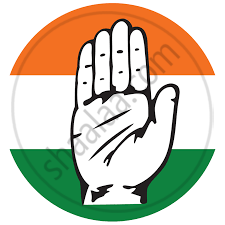 |
- The Indian National Congress was formed on 28th December 1885.
- Commonly known as the Congress Party. One of the world's oldest parties. It has gone through numerous splits.
- Congress was an all-comprehensive movement working for national independence at the time of its establishment. This nationalist movement brought together people from many ideologies.
- For several decades after India's independence, it played a dominant role in national and state politics. The party sought to establish a modern secular democratic republic in India under the leadership of Jawaharlal Nehru. The ruling party was in the centre until 1977, and then from 1980 to 1989. After 1989, its popularity decreased, but it is still present throughout the country, cutting across social divides.
- A centrist party (neither rightist nor leftist) in its ideological orientation.
- From the beginning, the party has followed the policy of
a. Secularism,
b. all-round development,
c. equal rights
d. welfare for minorities and disadvantaged sections of society. - As a result, Congress has organized a variety of programmes to attain those goals.
- The party believes in democratic socialism, social equality, and international peace.
- The INC supports new economic reforms that are human-centered.
- Leader of the United Progressive Alliance (UPA) government from 2004 to 2019. In the 2019 Lok Sabha election, it won 19.5 % votes and 52 seats.
(2) Communist Party of India:
 |
- This communist-inspired political party was founded on 26th December 1925.
- Marxism-Leninism, secularism, and democracy are among their beliefs. Opposed to secessionism and communalism.
- In India, this is an old party. This party works for the welfare of labourers and workers. It opposes capitalism.
- Accepts parliamentary democracy as a means of advancing the interests of workers, farmers, and the poor.
- In the 1960s, the party leadership developed differences on whether the Communist Party of India should embrace the leadership of Communist China or the Soviet Union. This caused a split in the Communist Party of India, and a new party, the Communist Party of India (Marxist), was created in 1964. After the split it became weak.
- Kerala, West Bengal, Punjab, Andhra Pradesh, and Tamil Nadu have a significant presence.
- Its support base had steadily declined over the years. It received less than 1% of the vote and only 2 seats in the 2019 Lok Sabha elections. Advocates for the unification of all left-wing parties in order to form a strong left-wing front.
(3) Bharatiya Janata Party:
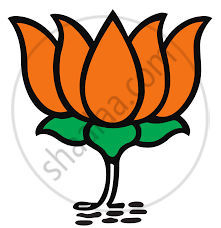 |
- Syama Prasad Mukherjee founded the Bharatiya Jana Sangh in 1951, which was revived in 1980 as Bharatiya Janata Party.
- Cultural nationalism (or 'Hindutva') plays a significant role in its understanding of Indian nationhood and politics.
- Demands full territorial and political integration of Jammu and Kashmir with India, a uniform civil code for all citizens, regardless of religion, and a prohibition on religious conversions.
- Its support base increased substantially in the 1990s.
- Previously restricted to the north and west, as well as urban areas, the party has expanded its support to the south, east, north-east, and rural areas.
- Came to power in 1998 as the leader of the National Democratic Alliance (NDA) including several regional parties.
- In the 2019 Lok Sabha elections, it emerged as the largest party, with 303 members. Currently leads the ruling NDA government at the Centre.
(4) Communist Party of India (Marxist):
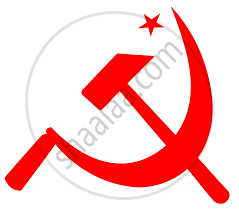 |
- It was founded in 1964. Believes in Marxism-Leninism. Opposes imperialism and communalism and supports socialism, secularism, and democracy.
- Accepts democratic elections as a useful and beneficial means of achieving the goal of socioeconomic justice in India.
- In West Bengal, Kerala, and Tripura, it has strong support, particularly among the poor, factory workers, farmers, agricultural labourers, and the intelligentsia.
- The new economic policies that allow the free flow of foreign capital and goods into the country have been criticised.
- Was in power in West Bengal for 34 years without a break. It received approximately 1.75 per cent of the vote and 3 seats in the 2019 Lok Sabha elections.
(5) Bahujan Samaj Party:
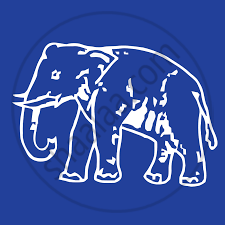 |
- The Bahujan Samaj Party is a socialist party. The party was founded in 1984 under the leadership of Kanshi Ram with the goal of safeguarding the interests of the 'majority.'
- The majority is composed of scheduled castes, scheduled tribes, religious minorities, and other backward sections. The party's goal is to concentrate power in the hands of the 'majority.'
- Inspired by the ideas and teachings of Shahu Maharaj, Mahatma Phule, Periyar Ramaswami Naicker, and Babasaheb Ambedkar.
- It has its main base in Uttar Pradesh and a significant presence in neighboring states such as Madhya Pradesh, Chhattisgarh, Uttarakhand, Delhi, and Punjab.
- Several times formed a government in Uttar Pradesh by enlisting the support of various parties. In the 2019 Lok Sabha elections, it received about 3.63 percent of the vote and secured 10 seats.
(6) Nationalist Congress Party:
 |
- Following a split in the Congress party, it was formed in 1999.
- Advocates for democracy, Gandhian secularism, equity, social justice, and federalism.
- Demands that high government positions be limited to natural-born citizens of the country.
- A major party in Maharashtra, with a significant presence in Meghalaya, Manipur, and Assam. In Maharashtra, a coalition partner with the Congress.
- Since 2004, a member of the United Progressive Alliance. It received 1.4% of the vote and 5 seats in the 2019 Lok Sabha elections.
(7) All India Trinamool Congress:
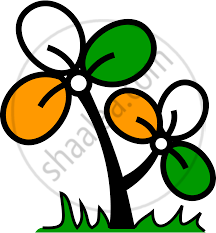 |
- All India Trinamool Congress Party was founded on 1st January 1998 under the leadership of Mamata Banerjee.
- In 2016 it was recognized as a national party by the Election Commission. The party’s symbol is flowers and grass.
- The party advocates for democracy, secularism, and the protection of the interests of society's weaker sections.
- Since 2011 it has been in power in West Bengal. It is also present in Arunachal Pradesh, Manipur, and Tripura.
- In the 2019 General Elections, it received 4.07 percent of the vote and gained 22 seats, making it the fourth-largest party in the Lok Sabha.
| Number of seats secured by National parties in the Loksabha elections of 2009 and 2014 |
||
| National Parties | Number of Seats | |
| 2009 | 2014 | |
| Indian National Congress |
206 | 44 |
| Communist Party of India |
04 | 01 |
| Bharatiya Janata Party |
116 | 282 |
| Communist Party of India (Marxist) |
16 | 09 |
| Bahujan Samaj Party |
21 | -- |
| Nationalist Congress Party |
09 | 06 |
If you would like to contribute notes or other learning material, please submit them using the button below.


